Image Archive


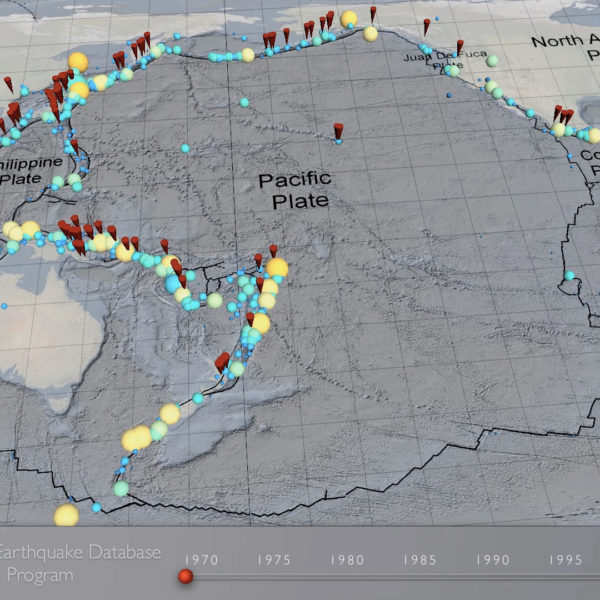


























Why study Volcanoes

Where volcanoes form.001

This animation shows the relationship between earthquakes and the location of volcanoes around the "ring of fire". Credit: UW Center for Environmental Visualization.

During subduction of the Juan de Fuca (JdF) Plate beneath the North American Plate, ocean crust and overlying sediments being carried downward heat up, releasing water and other gases into the overlying plate, causing melts to form ~ 50 miles beneath the volcano. Images of the volcanoes are in the USGS public domain. In conrast, Axial Seamount is formed by melts rising from beneath the JdF spreading center that forms the plate boundary between the Pacific Plate and the JdF Plate. Credit. D. Kelley, University of Washington.
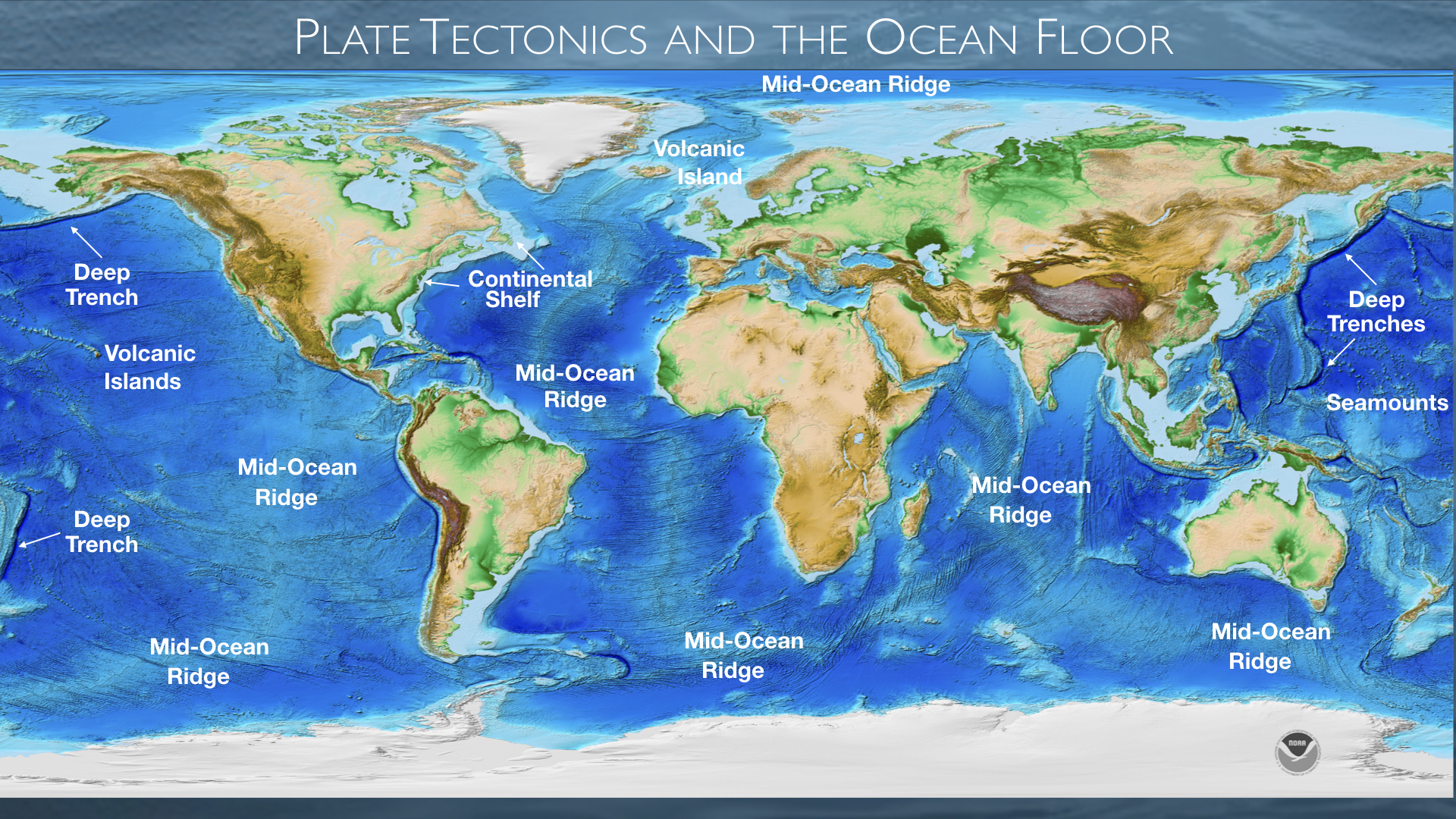
Topographic map of Earth, modified from NOAA (Amante et al., 2009) showing features of the seafloor. Credit: D. Kelley, University of Washington.

Graphing the Ocean Floor.001

Gallery Overview

Lesson1 Gallery.027

Lesson1 Gallery.026
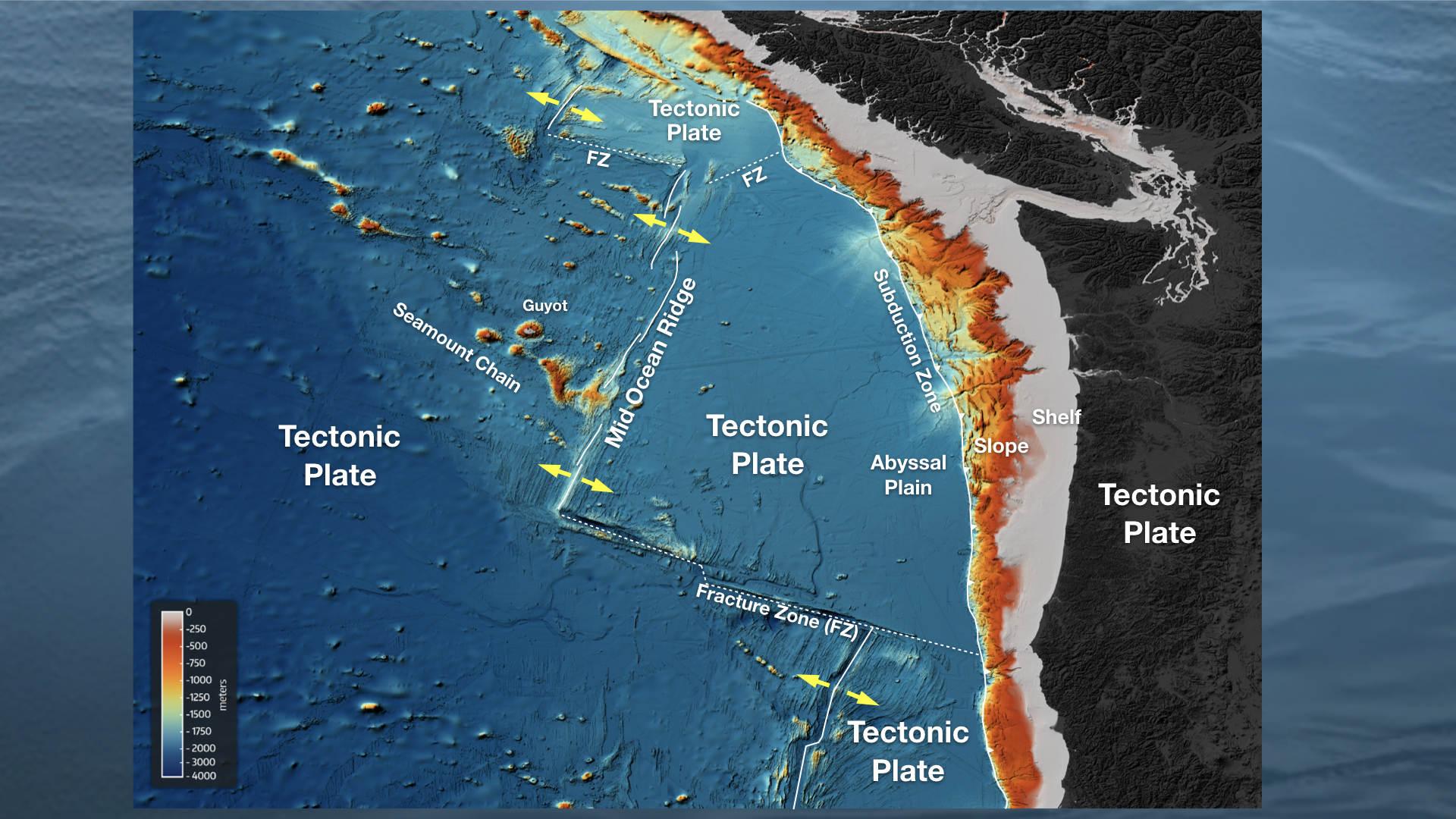
Lesson1 Gallery.025

Lesson1 Gallery.024

Lesson1 Gallery.023
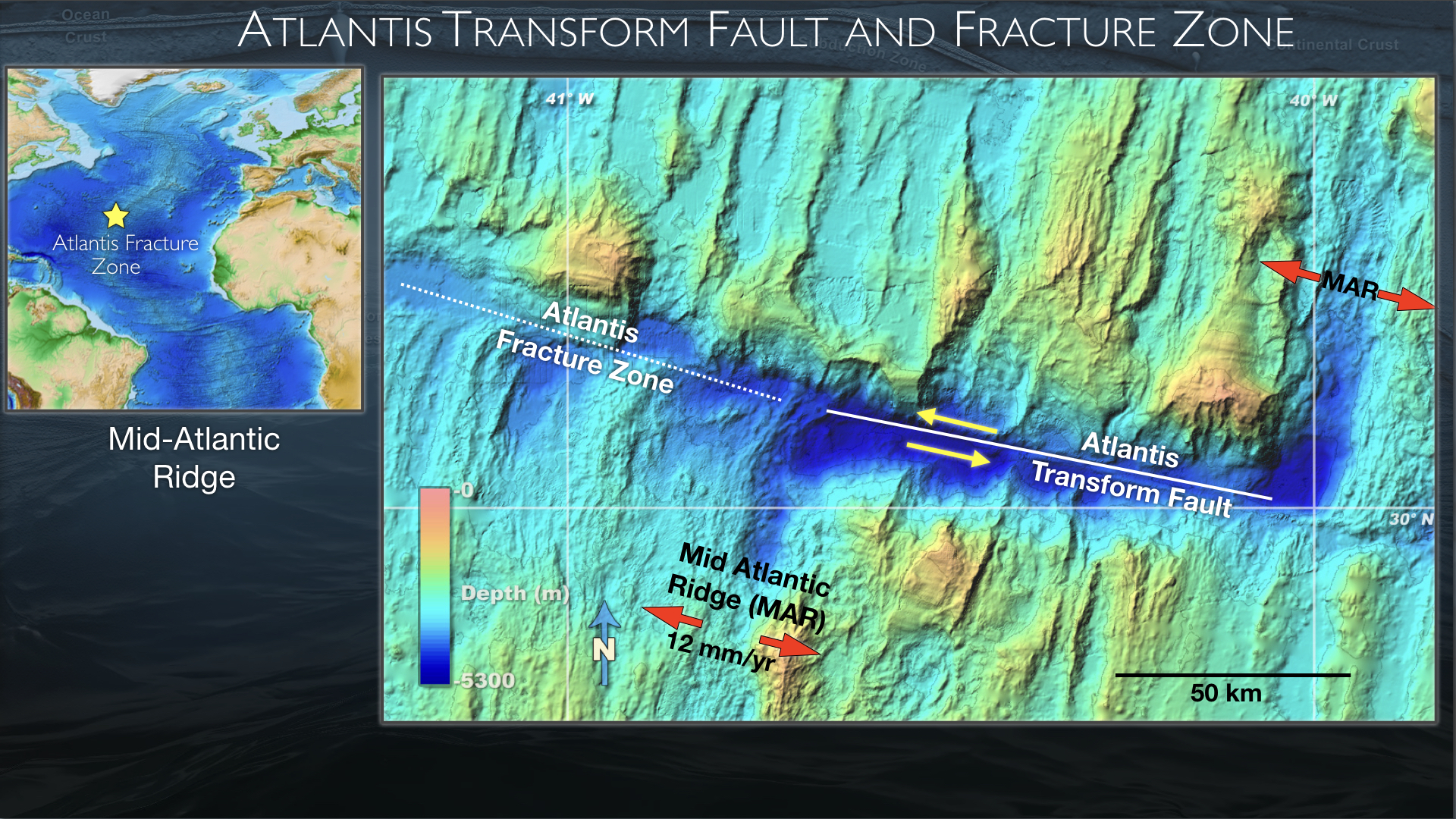
Lesson1 Gallery.022

Lesson1 Gallery.021
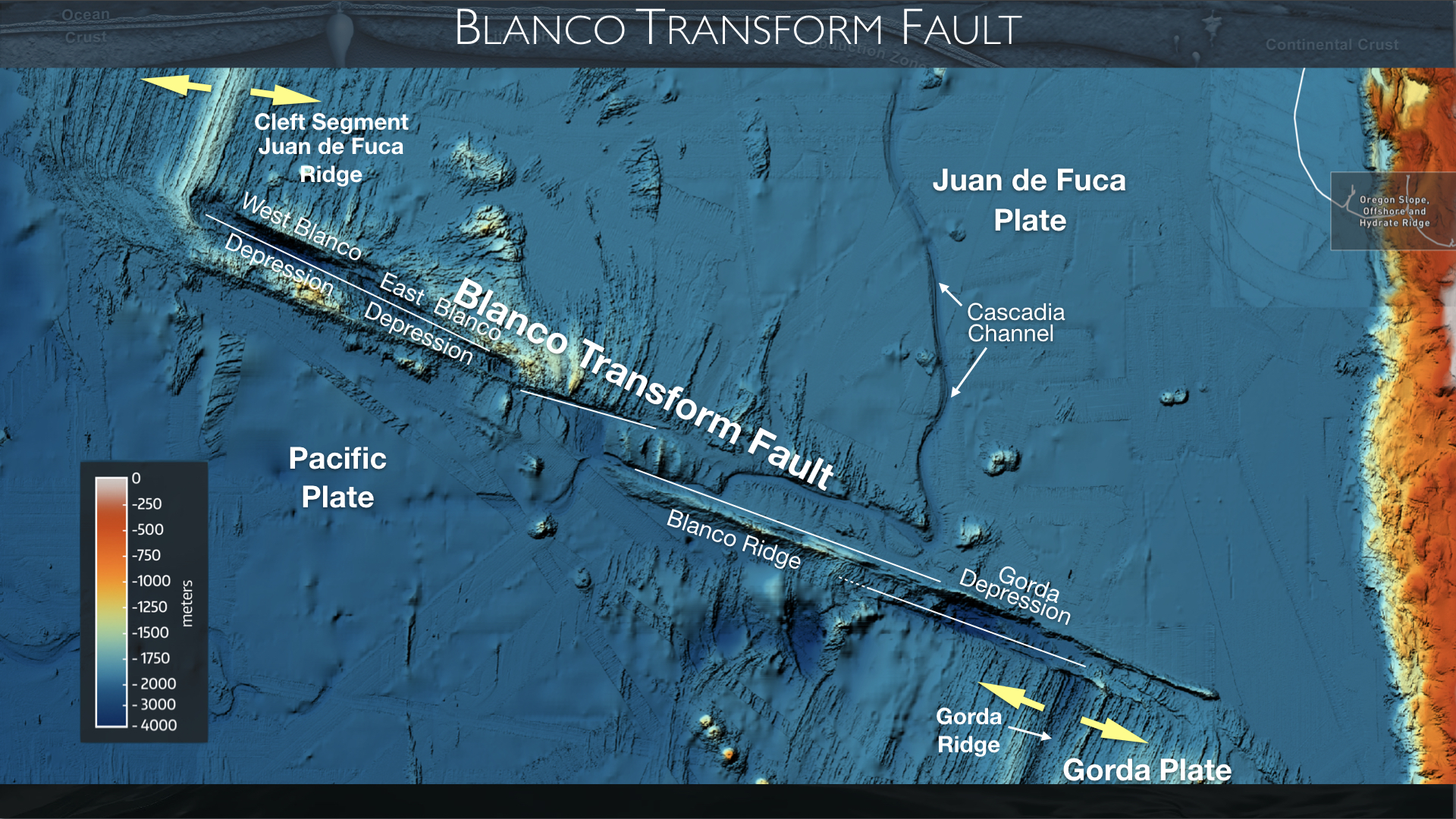
Lesson1 Gallery.020

Lesson1 Gallery.019
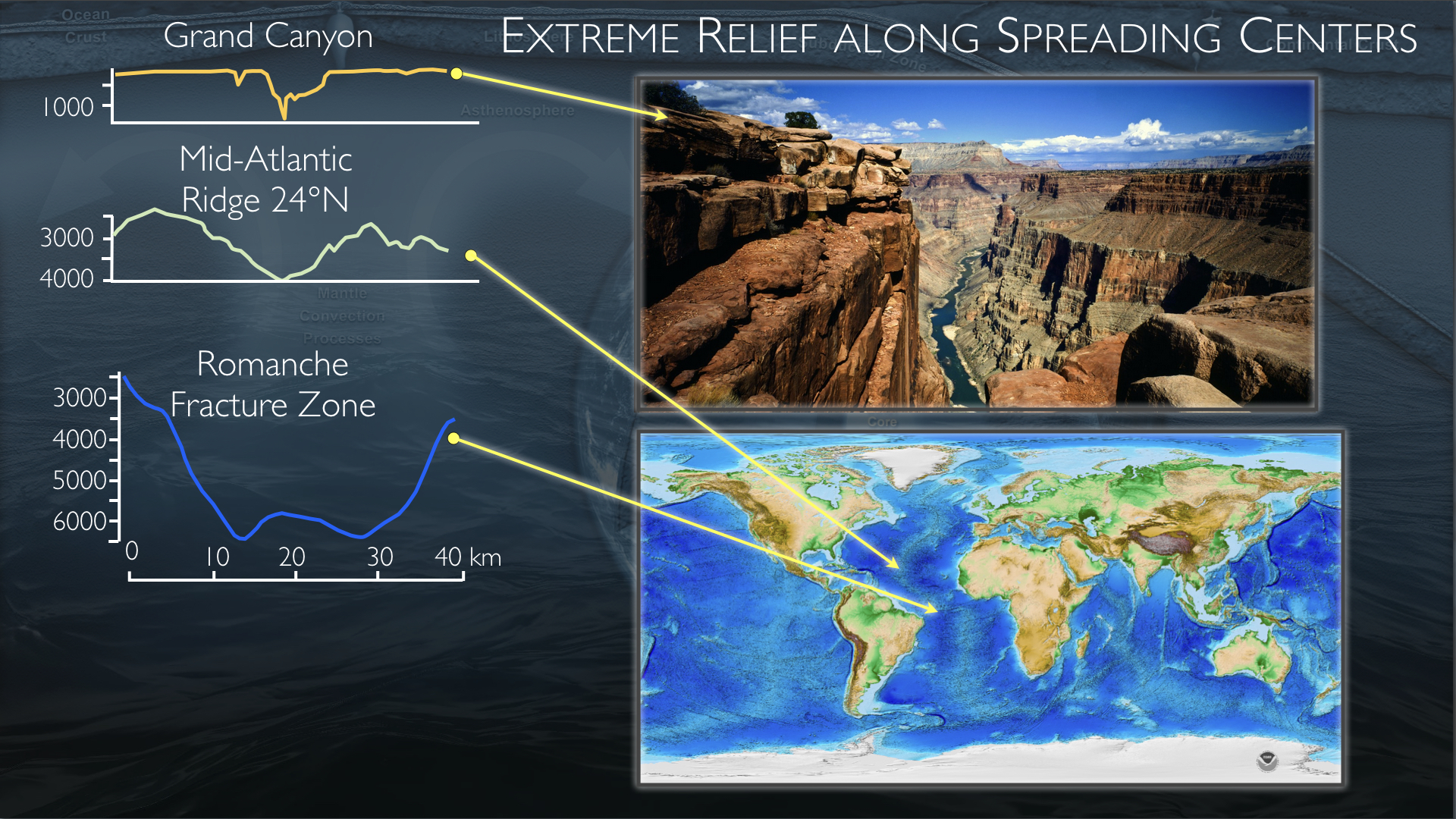
Lesson1 Gallery.018

Lesson1 Gallery.017

Lesson1 Gallery.016

Lesson1 Gallery.015
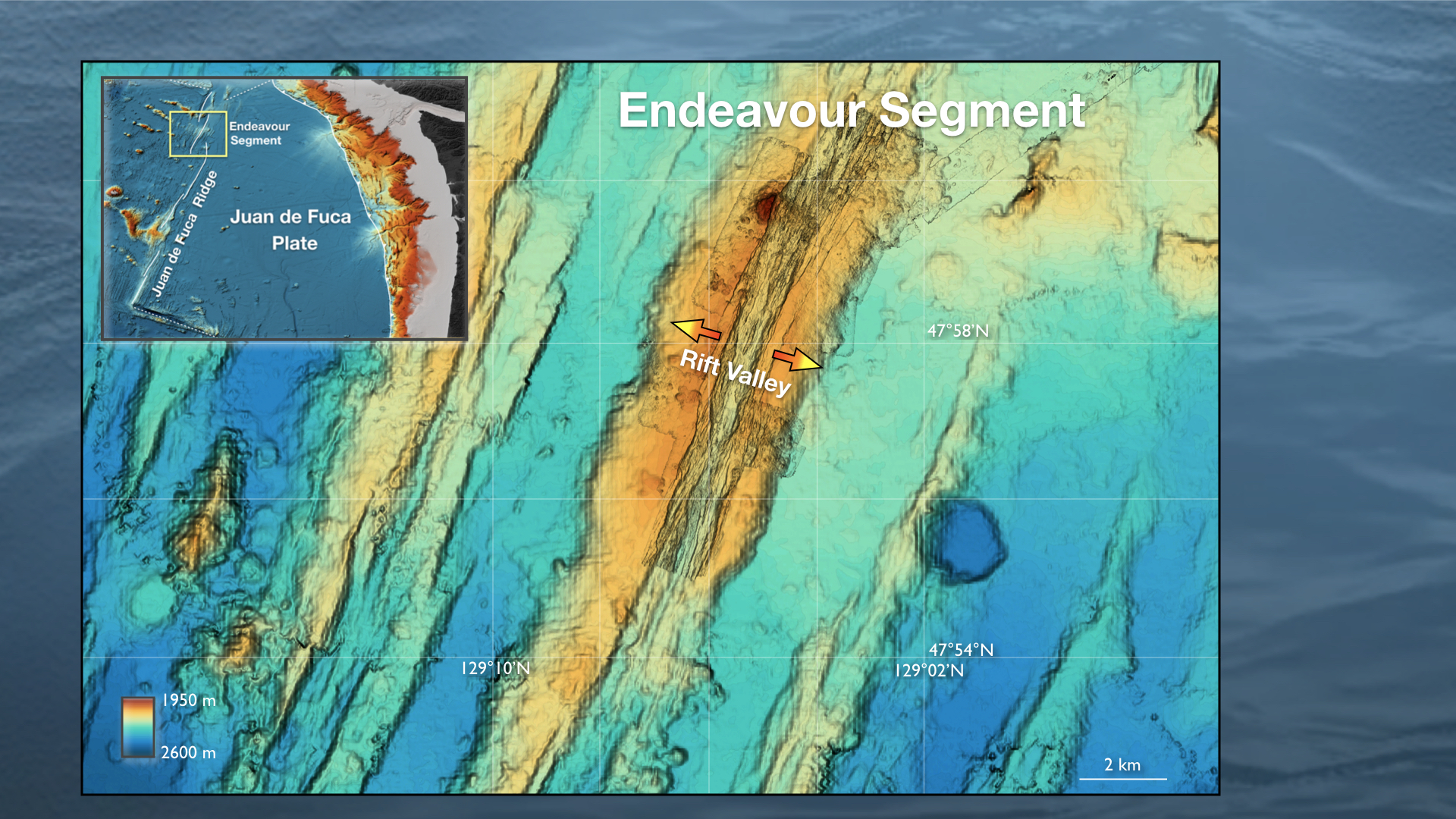
Lesson1 Gallery.014

Lesson1 Gallery.013
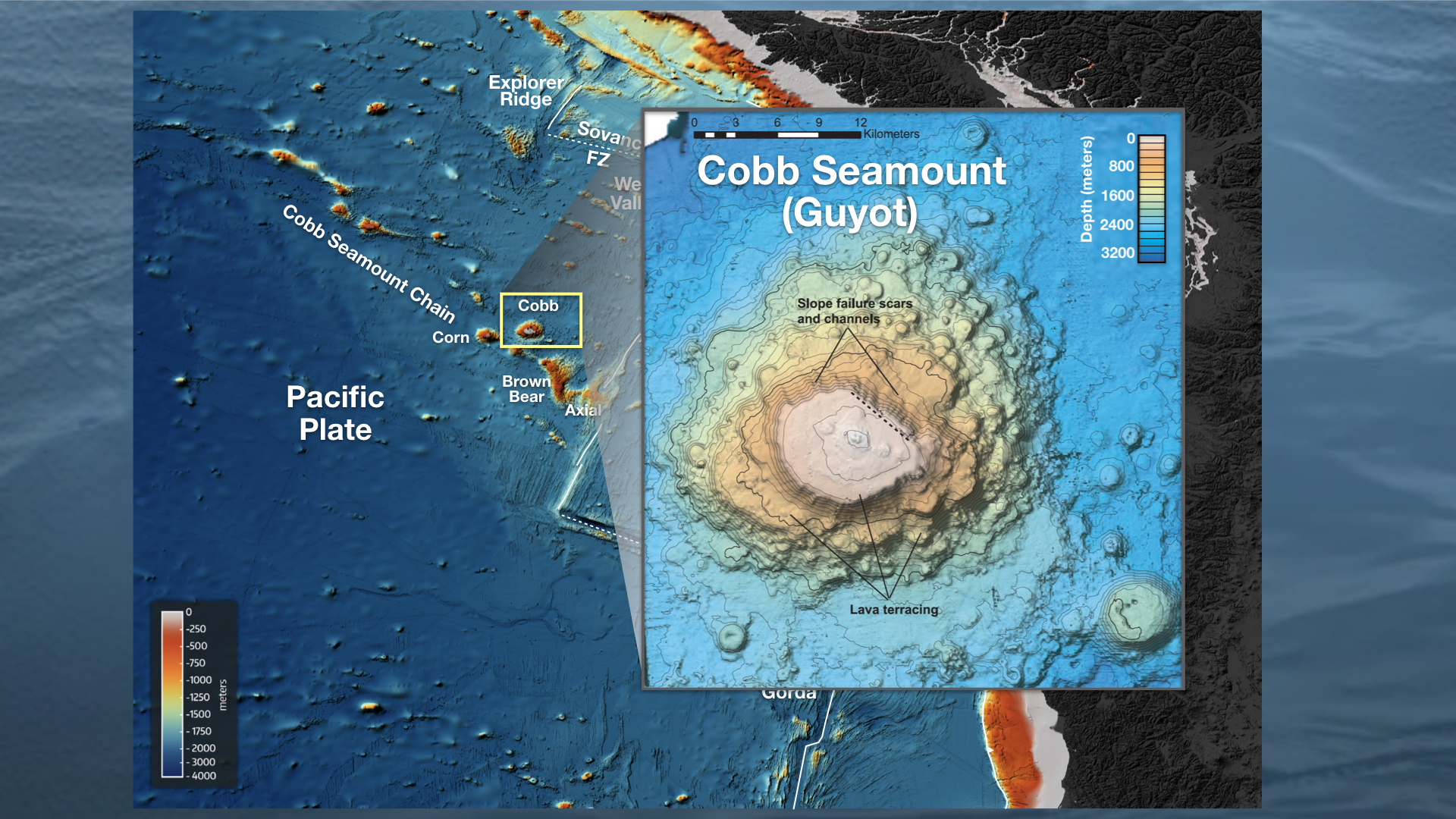
Cobb Seamount is ~ 100 km west of the Cobb hot spot, currently feeding Axial Seamount on the Juan de Fuca Ridge. It is ~ 3.3 Ma in age. The flat-topped summit is at a depth of 200-300 m. It was formed when the summit was above sea level. The inset of Cobb is after Chaytor et al., Seamount morphology in the Bowie and Cobb hot spot trails, Gulf of Alaska. Geochem. Geophys. Geosyst., doi:10.1029/2007GC001712. Credit. D.S. Kelley, University of Washington.

Axial Seamount rises to a depth of ~ 1500 m beneath the oceans surface and is cut by the Juan de Fuca Ridge. Transform faults and fracture zones bounding tectonic plates off Vancouver Island south to California. Credit: Center for Environmental Visualization and D. Kelley, University of Washington.

The intermediate spreading Juan de Fuca Ridge hosts multiple segments. A hot spot underlies the ridge beneath Axial Seamount. The Cobb-Eickeberg Seamount chain marks the migration of the Pacific Plate over time. Transform faults and fracture zones bounding tectonic plates off Vancouver Island south to California. Credit: Center for Environmental Visualization and D. Kelley, University of Washington.

Transform faults and fracture zones bounding tectonic plates off Vancouver Island south to California. Credit: Center for Environmental Visualization and D. Kelley, University of Washington.

Tectonic plates off Vancouver Island south to California. Credit: Center for Environmental Visualization and D. Kelley, University of Washington.

Bathymetric map showing the tectonic plates from California north to Vancover Island. Credit: Center for Environmental Visualization and D. Kelley, University of Washington.
- Anemone
- Animal
- Arthropod
- ASHES
- Axial
- Axial Base
- Axial Biology
- Axial Caldera
- Bacteria
- Basalt Lava
- BEP
- Biofouling
- biolgoy
- Biology
- Camds
- Camera
- Camhd
- Central Caldera
- Ciliates
- Cnidaria
- Coastal Biology
- Crab
- Deep Profiler Mooring
- Dive Highlights
- Eastern Caldera
- Echinoderms
- Endurance Array
- Engineering Team
- ENLIGHTEN 10
- Exploratorium
- Fish
- Geology
- HD Camera
- HPIES
- Hydrate Ridge
- Hydrates
- Hydrophone
- Hydrothermal Vents
- Illustration
- Inshore 80 Meters
- Instrument
- International District
- J-BOX
- Jason
- Jellyfish
- Junction Box
- K12
- Lava
- Mollusk
- Moorings
- Nodes
- Nudibranch
- Octopus
- OOI
- Oregon Offshore
- Oregon Offshore 600 m
- Oregon Shelf
- Oregon Slope Base
- People
- PN1B
- PN1D
- Polychaetes
- PPSDN
- Primary Node
- RASFL
- ROCLS
- ROPOS
- ROPOS Dives
- ROV Team
- RV Revelle
- RV Sikuliaq
- RV Thompson
- Salp
- Sample
- SC13
- Science Team
- Sea Cucumber
- Sea Star
- Sea Urchin
- Seafloor
- Seismometer
- Sensors
- Shallow Profiler Mooring
- Shark
- Shipboard
- Shore Station
- Slope Base
- Smoker
- Soft Coral
- Southern Hydrate Ridge
- Sponge
- Squid
- Students
- Students & Guest Participants
- Tmpsf
- Tubeworms
- VISIONS 11 Leg 1
- VISIONS 11 Leg 2
- VISIONS 11 Viewers
- VISIONS 13
- VISIONS 14
- VISIONS 15
- VISIONS 16
- VISIONS 17
- VISIONS 18
- VISIONS 20
- VISIONS 22
- VISIONS 23
- Visualization
